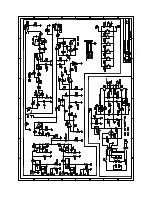
Placement Guidelines
Prior to installing your new subwoofer, please consider
the following guidelines. Placing the subwoofer near a wall
or in a corner will greatly increase its bass response. As
f requencies re p roduced by subwoofers are long and need
room to propagate, a subwoofer placed near the listening
position will not sound as full as one placed farther away.
The subwoofer cabinet is designed to blend in with most
decors. If you decide to place anything directly atop your
s u b w o o f e r, please use great caution, as the speaker cabinet
will vibrate and items placed on top may shake loose or fall.
Using the Controls
Power
The
power
switch has two positions:
off
, and
auto
. The
auto
position is the default setting. This keeps the amplifier
in a standby mode. Using sophisticated signal sensing
circuitry, the amplifier is activated when a signal is detected
at either of the inputs. If no signal is detected after several
minutes, the amplifier switches back to the standby
mode. The
off
position overrides this circuit, turning the
subwoofer off manually. The
power
LED indicates the subwoofer's status.
Phase
The default setting for the
phase
switch is the 0º position. As the subwoofer is sometimes placed quite a distance from the other speak-
ers, its sound may arrive at your ears milliseconds before or after the sound from your other speakers. In the very rare instances where
the subwoofer is
out of phase
, the bass will appear somewhat hollow, and the
level
control may seem to have little or no effect. Setting
the phase switch to the 180º position will compensate for these effects.
Note: Phase is relative and can be diff e rent from location to location.
Always return to the normal listening location to evaluate any setting changes.
Level
Since your subwoofer is designed to work in conjunction with other speakers, we have provided a
level
c o n t rol will allow you to balance
the output of your unit with the rest of your system. Once set, the level control should not re q u i re further adjustment. Begin with the level
c o n t rol at the minimum position. Slowly increase the level until the subwoofer's output is equal to that of your other speakers.
Note: Output
level is relative and can be diff e rent from location to location. Always re t u rn to the normal listening location to evaluate any setting changes.
Crossover Frequency
The
crossover frequency
control is used to adjust the point at which the subwoofer stops reproducing the frequencies played by the
other speakers in your system. Raising the crossover frequency increases the frequencies the SW Ten will reproduce. Lowering the
crossover frequency will do the opposite. Generally, the smaller the speakers used with a subwoofer, the higher the crossover frequency
should be set. We recommend starting at the 12 o'clock position (100 Hz) and moving to the left with larger speakers or to the right
with smaller speakers.
Connecting the SW Ten
General Information
The diagrams on the following page show four of the most common types of subwoofer connections. This information will guide you
through the connection process.
All signals into your unit will first pass through the crossover. The portion of the signal below the current
crossover frequency
setting
will be reproduced by the subwoofer. The unprocessed signal will also be passed to the hi and line level outputs. If you have a choice
of connection options, remember that it may be easier to run long distances with speaker wire than with line connectors.
Hi Level In
These inputs are designed to accept an amplified signal from the speaker outputs of a receiver, power amp or other device not equipped
with line level outputs.
Hi Level Out
The original amplified signal from your source is present at these outputs, for connection to the existing left and right speakers.
Line In
These
RCA jacks
are designed to accept a line level signal from a receiver, pre-amp, surround sound decoder or similar device. When
using a single line level output from another unit, a
Y
connector should be used to send the signal to both the left and right inputs.
(Using the tape loop of a receiver or preamp is not recommended. Tape jacks typically send a constant level, regardless of the volume
setting, unlike preamp outputs. This will affect the balance between the subwoofer and the rest of the system.)
Line Out
The original signal from your source is present at these outputs for connection to another subwoofer or power amplifier.






















